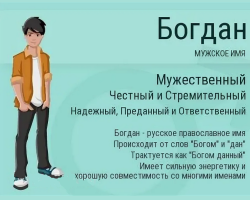Pregnancy is a significant period in the life of any representative of the fair sex. After the end of this period, a woman not only faces many issues regarding the treatment of the baby, but also begins to think about the restoration of her body.
Content
- What is the postpartum bandage for?
- How to choose the right postpartum bandage?
- Types of postpartum bandages
- Which postpartum bandage to choose?
- How to put on a postpartum bandage correctly?
- How to wear a postpartum bandage?
- How much to wear a postpartum bandage?
- When can you wear a postpartum bandage?
- How to wear a postpartum bandage after Caesarean?
- Video: postpartum bandage
- Upon returning home from the maternity hospital, a happy mother begins to think about how to return her previous forms to her body or even improve them. At every glance in the mirror, a sagging stomach constantly reminds of the need to take measures
- Regardless of whether you had a cesarean section or natural birth, it will take a lot of time before you can do physical exercises
- For the first time after childbirth, the use of a postpartum bandage is ideal, which will not only contribute to pulling up the weakened muscles, but also help your body to recover faster
What is the postpartum bandage for?
- Each birth is strictly individual. They differ in duration and complexity, can occur naturally or end with a cesarean section, with or without any complications
- The need to wear a postpartum bandage is considered separately for each case. Even among medical personnel there are many discussions about the harm and benefits of its use
- First of all, the correctly selected bandage helps to reduce the load on the muscles of the abdomen and back, reduces pain from uterine contractions and does not allow the stomach to be hopelessly sag after giving birth
And after discharge from the hospital, he will help to alleviate the load, because the woman has a lot of things to do with the house.
Despite all the disagreements, there are a number of basic indications for wearing a bandage:
- C-section
- Problems with the spine: curvature, scoliosis, etc.
- Strong pain
Contraindications:
- Internal or external seams on the perineum - the bandage prevents blood circulation, which can adversely affect their healing, moreover, the likelihood of an inflammatory process is not excluded
- Kidney or gastrointestinal diseases
Important: to make it easier to return the figure after childbirth, it is recommended to wear a prenatal bandage, starting from 20-22 weeks of pregnancy.

How to choose the right postpartum bandage?
- The correctly selected size of the postpartum bandage plays a crucial role. It depends on how effective the action of the bandage will be, and the degree of comfort during wearing
- If during pregnancy you gained 12 kg or less, then it is worth buying a bandage that corresponds to the size of clothing before pregnancy. If the weight gain was more than 12 kg, it is preferable to purchase a bandage 1-2 sizes more than before pregnancy to avoid excessive tugs
- If a few days later you feel not very comfortable in the bandage, most likely its size was chosen incorrectly
Important: the size of the bandage for different manufacturers may vary. Measure the waist and hips and look at the correspondence in the size table on the bandage package.

Types of postpartum bandages
- Universal - It differs in practicality, as it is suitable for wearing both before childbirth and after them. It has a wide part, which during pregnancy is located on the back, and after giving birth - on the stomach

- Underpants - Convenient in use, have a wide belt with a pulling stomach insert. However, it is difficult to visit the toilet in it, so it is recommended to choose a model with a fastener below, like a body. The size of such a bandage should be one more than you wear. Keep in mind that a bandage-truss requires washing every day

- Bermuda - They look like panties, only have a large length, they can reach the knees. It pulls not only the stomach, but also the area of \u200b\u200bthe hips and buttocks. It is convenient to wear such a bandage thanks to the side fastener (lightning or hooks)

- Skirt - Coves the upper half of the hips and the waist, put on top of linen. It fixes the stomach well, easy to handle. The disadvantage of such a bandage is that when moving, it can rise on the stomach

Which postpartum bandage to choose?
- When choosing a bandage, the size plays the role primarily. An incorrectly selected bandage can bring discomfort and not perform its functions. The bandage should not tightly pull the body or, conversely, hang freely
- A correctly selected bandage will practically not cause you inconvenience. He does not stick out from under clothes, Velcro does not cause discomfort
- It is preferable to purchase a bandage from materials that allow the skin to breathe and absorb moisture (for example, microfiber or a lipra)
- Pay attention to the fasteners. They should allow you to adjust the degree of compression, whether it is hooks or Velcro. In addition, keep in mind that inconvenient fasteners can cling to clothes or rub the skin
- All types of bandages have both pros and cons. Your attending physician will help you perfectly choose the model suitable for you, but with the size and material you can already decide on your own
Important: purchase a bandage in specialized stores or pharmacies, where you will be helped to choose the right model and size of the postpartum bandage, you may even be able to try on it. Avoid the purchase from hand or in online stores.

How to put on a postpartum bandage correctly?
It is recommended to wear a bandage only in a lying position when the muscles are as relaxed as possible.
Important: after putting on the bandage, do not get up sharply to avoid the difference in pressure, which can lead to fainting.

How to wear a postpartum bandage?
Wear the bandage under the clothes or from above whether to wear it on underwear - all this depends on the type of bandage you have chosen. For example, it is inconvenient to wear a bandage with trousers, and with bermuda the length of the skirt or dress is limited by the length of the bandage.
How much to wear a postpartum bandage?
- The duration of wearing is determined individually in each case. The complexity of the delivery, the intensity with which the uterus is reduced, the elasticity of the skin is taken into account
- Regardless of whether you put on a bandage immediately after childbirth or the next day, you need to wear it no more than 10 hours a day, and every 3 hours take breaks. The best option for the night to remove the bandage, because at night the muscles are relaxed and there is no strong load on the back
- On average, the bandage is recommended to wear 4-6 weeks. After this period, its use becomes useless because the uterus is tone, and the skin is tightened

When can you wear a postpartum bandage?
In the absence of contraindications for wearing a bandage, it is recommended to wear it on the day of childbirth, in extreme cases the next day. Depends on when the newly made mother is allowed to get up.
Do not show excessive zeal, wait for the postpartum examination and consult your doctor about wearing a bandage. So you can ask questions you are interested in if there are evidence or find out the reason for the ban.
How to wear a postpartum bandage after Caesarean?
There are a number of reasons why it is necessary to wear a bandage after a cesarean section:
- Milk arrives much later. This negatively affects the rate of uterine contraction
- The seam needs to be protected against mechanical influences and physical exertion
- The muscles are devoid of tone
- In the postoperative period there are severe pain that prevents the full care of the newborn
- Physical activity and sports are contraindicated for a long time - from 4 to 6 months
The rules for wearing a bandage are the same as for ordinary births, however, after cesarean section, not all models are suitable. Give preference to models that fix the stomach well and protect the seam. You can purchase a special postoperative bandage or bandage.
Be sure to put on a bandage when you work around the house or carry a child in your arms. Do not forget to shoot it from time to time to give the seam to breathe, and to work on the muscles yourself.
After 1-1.5 months, when you do not need the bandage, it is not recommended to abruptly stop using it, otherwise pain in the muscles will appear. Unlearn your body from outside help, gradually reducing the time spent in the bandage.







